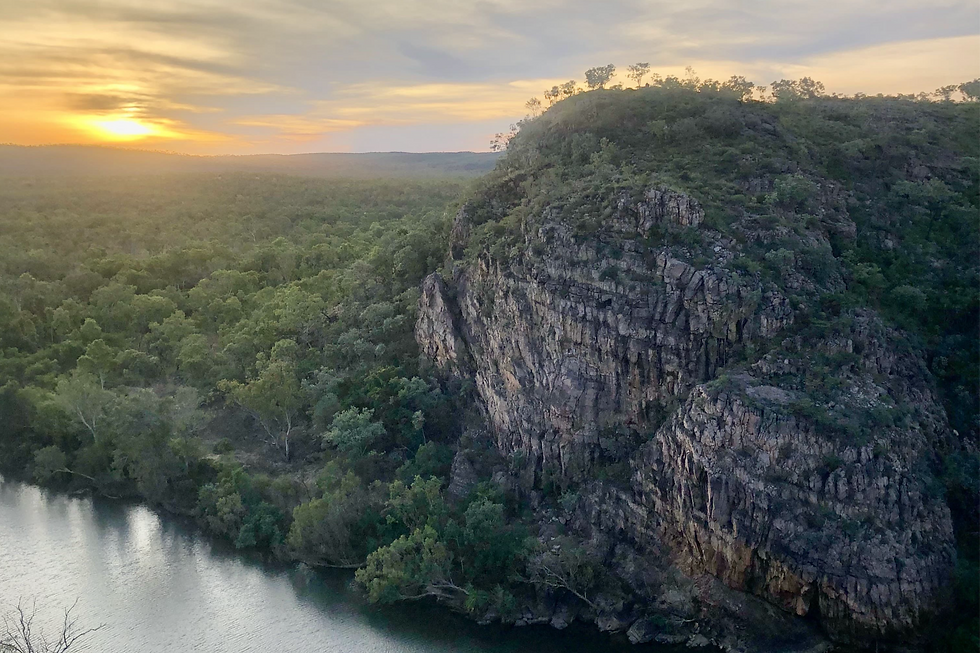A Review: The Stuart Highway
- Cameron Say

- Aug 14
- 4 min read

Hot, remote and painstakingly long, the Stuart Highway is far from an international visitor's idea of a good time. Consistently ranked as one of Australia’s most dangerous roads, with speed limits at 130km/h, it’s rarely a tourist drive.
The Stuart Highway stretches from Darwin to Port Augusta and covers a distance of over 2,700km. It traverses Australia from north to south. Going from the tropical savanna in the north with its vibrant greens, crocodiles and white sand beaches, passing through the gargantuan red centre, and finally ending on the south coast at the steel town of Port Augusta.
Leaving Darwin from the northern end, don’t expect urban amenities. Only 80km south of Darwin, Adelaide River already feels like the outback. Stuffed buffalo, saltwater crocodiles, and eclectic meat raffles will have you thinking you’re further south than you actually are.
Here, it's best not to drive at night. I've seen enough animals cleaned up by road trains to instil a deep, ongoing fear (think buffalo, upside down with legs straight in the air, rotting away). But the most dangerous thing on these roads isn’t the animals, but the boomers in their caravans.
On 130km/h roads, these boomers, aka grey nomads, love to sit at 80km/h. This presents a dilemma when they are followed by five-carriage road trains, which are forced to overtake because the grey nomads refuse to pull over. Watch out for a string of caravans heading north every winter, the grey nomads will swarm to the road like flies to a dead roo.

Soon you’ll be hitting K-Town or Katherine, depending on the season. Some days it's K-Town: with incredible culture, abundant outdoor recreation and hot springs. Other days it's Katherine: hot, endlessly muggy with no rain in months despite being the ‘wet season’. The Katherine tourism centre states, ‘where the tropics meet the outback’. ‘Where extreme desert heat meets high humidity’ would be more appropriate. You're now leaving croc country and entering the Central Desert.
Aboriginal cultures of the Central Desert are strong and proud, both in history and culture. Unfortunately, there are few Culture Centres to untangle this maze. The only exception is Tennant Creek, where you’ll find a neat little cafe, Culture Centre and opportunity to learn about the ancestral spirit of the Nyinkka or Goanna.
Tennant Creek, better known as ‘TFC’ (Tennant Fucking Creek), has a servo so good, I once overheard someone say that “the food made me cry tears of joy”. Sadly, its reputation precedes itself in all the wrong ways, or at least, until you taste some of Australia’s best servo fried chicken.
Passing by the deeply sacred Karlu Karlu or Devils Marbles, a walk through the giant granite boulders is a must. The next stop is Wycliffe Well, the ‘Alien Capital of Australia'. If aliens existed, I can't figure out why they would land here. Now, just an abandoned caravan park, it's best to leave this brief stop to the flies and extraterrestrials.

Further south, passing through the lands of the Warumungu, Kaititj and Anmatjere peoples, arrives Arrernte Country. Don’t be fooled, these distances are normal for a Territorian. I once met a man in his 90s who would still drive over 2,000km in one long trip. His secret – chewing ice (H20, not crystal meth*).
There is hardly a better entrance to a town than the northern end of Mparntwe (Alice Springs). Ochre red mountain ranges give way to the first major town for 1,600km. Here is Australia’s most remote and most popular cuisine in Alice Springs: KFC. Rumour has it the owners made a case for a Michelin Star. They were unsuccessful. Putting French culinary snobbery aside, this is the best KFC in the country.
The stretch between Alice Springs and Coober Pedy is the antithesis of a honeymoon destination. Over many years, I’ve tried to rebrand Coober Pedy as the ‘Southern Highlands’, with minimal success. Further south, conditions deteriorate, with some of the most barren sections of a barren highway. A salt lake or two will be all that can be seen. Ensure there's music downloaded or a talkative passenger. It's a tough place to play ‘I Spy'. Rock, sky, and road are all you will find.

Next stop is Woomera. Woomera, the name being given after the Aboriginal Eora language word for ‘spear launcher’, was an early rocket launching facility. To the west, in Maralinga lands, nuclear testing took place, displacing Pitjantjatjara and Yankunytjatjara peoples and causing irreversible ecological and environmental damage. This is a sobering, little-known history that, unfortunately, most Australians aren’t familiar with.
Finally, passing saltbush and maybe even an emu, you’ll arrive in Port Augusta, the southern end of the Stuart Highway. People like to call this place “Port O’Gutta”, but to me, the place is a destination in itself. Not only does it have one of the best botanical gardens around, but it also offers incredible views of the Flinders Ranges, the ocean, and supermarkets. Most importantly, you are no longer subject to the degustation of servo food.
This barren stretch of tarmac and dust has connected the parts of my life. Heading south, it's decompression after desert living. Heading north, it's time to recharge the social battery after visiting family and friends. At the very least, it's the ultimate tour de servo food; at its best, it's a drive through deep-time Australia, with incredible fried chicken.
Stuart Highway – 4 stars.




